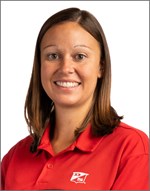Reducing Costs for 2023 – Part 1
BY Dairyland Seed Agronomy Team
As harvest continues to move along, some producers are firming up plans for next year’s cropping season. Many producers are contemplating their plan when considering higher input prices -- in particular fuel and crop nutrients.
This article is the first in a two-part series looking at potential opportunities to help manage costs and/or increase return-on-investment. Every farm/ranching operation is different and not always will one thing be the best option for your business. However, the options listed below provide potential ideas on where to start.
- Soil Testing: If you have not had a soil test done on a field for quite some time, I would suggest you do so. (I normally recommend having a this done every 4-5 years.) Your soil test levels are an indicator as to whether you can cut and/or where you should not.
- Grid or Zone Sampling: A standard soil sample is a nice tool showing for soil test levels, however, a grid or zone sampling soil test shrinks the area that you will be testing from just 2 or 4 samples on a 40-acre field to 8 or more. The more correct information you have, the better able you are to manage your fertility levels. Grid or Zone sampling shows you which acres or portions of a field need nutrients or lime and which ones do not allowing more flexibility on what to apply, when, and where.
- Soil pH: Managing soil pH offers one of the best Returns-on-Investment in a farming operation. If your pH is low (6.3 or lower), nutrients are not readily available to the plant compared to if your soil pH is 6.5 to 7.0. By actively managing your soil pH, you increase the availability and efficiency of crop nutrients in the soil. This is especially true in Nitrogen management where a low pH soil needs more N to obtain the same yield.
- Utilizing Manure: If we have fields or farms that traditionally have had manure applied to them, considering putting manure on different or “new” farms. Applying manure on different acres, or spreading lesser amounts on more acres, can provide a great tool to reduce the amount of purchased crop nutrients. Conversely, if you have high fertility levels and do not need the manure, this would be a wonderful time to sell some of it. Manure is a great source of crop nutrients, but also provides biological activity that many soils could benefit from.
- Soil Nitrate Testing: In many areas of the Dairyland Seed footprint we have been warm and dry. Normally, when we have warm temperatures, our soils warm up and organic matter starts to release (mineralization) more nitrogen into the soil. Until plants take up this nitrogen, or it is immobilized by soil organism, this Nitrogen is free to be used. By doing a soil nitrate test this fall and again next spring, you would have an idea of what is available in the soil as Nitrate, and could potentially reduce the amount of Nitrogen applied. As a general statement, if we stay cool and dry until next spring, most of the Nitrogen should be there. Conversely, if we start getting warmer soils (above 41° F) and more frequent rainfall, this nitrogen could denitrify or leach from the soil surface. By doing a Nitrate test this fall and next spring, you know what is available.
- Reducing Applied Fertilizer Amounts: If your soils nutrient levels are testing in the medium to high range, cutting back the amount of nutrients applied is something that could be done to help reduce costs. If you soil nutrient levels are testing high to very high, you may not need to apply nutrients. Considering the cost of crop nutrients, this could be a significant amount of dollars. If your soil nutrient levels are in the low to medium range, I would recommend just applying crop removal or what nutrients your crop removed this last growing season(s). This can be done by downloading or bringing your yield information into Granular from Corteva.
Making the decision to reduce or not apply crop nutrition can be a particularly crucial decision on an operation, and not just for this upcoming growing season. Having up to date soil test information is a critical in helping you and your Dairyland Seed Agronomist or other trusted advisors such as your Dairyland Sales Manager in making decisions.
If you have question on this or other Agronomic topics, please contact your Dairyland Seed team. Have a safe harvest season.
 |
 |
 |
 |
 |
| Brian Weller Western Region 507.456.3034 |
Dan Ritter Central Region 219.863.0583 |
Branden Furseth Northern Region 608.513.4265 |
Mark Gibson Eastern Region 260.330.8968 |
Amanda Goffnett Eastern Region 989.400.3793 |
